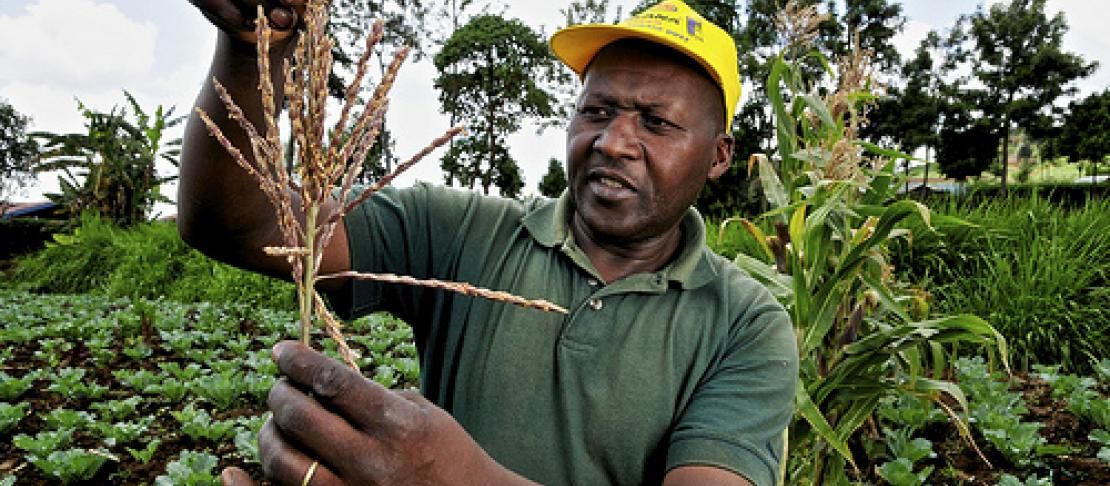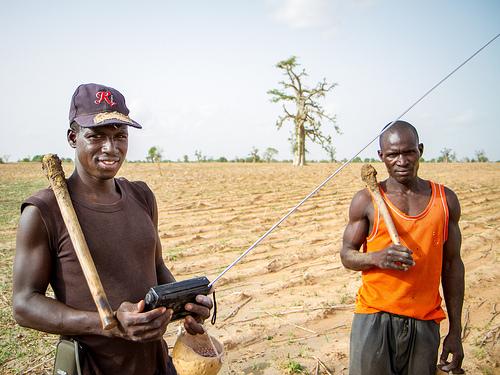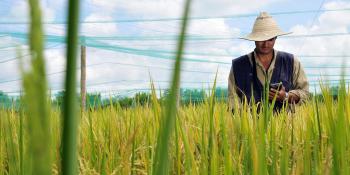What's needed to help smallholders make better use of climate information?

In a recently published Guardian article, readers got to see how information and communication technologies (ICTs) can assist farmers accessing agricultural information and change their farming practices accordingly.
However, a new Working Paper, Delivery models for climate information in East and West Africa, from the CGIAR Research Program on Climate Change, Agriculture and Food Security (CCAFS) finds that, even if the use of agriculture information among smallholders is in fact increasing, there is still a significant gap between farmers receiving information and actually acting upon it.
In addition, even if more information is available, many farmers are still finding it difficult to access relevant agricultural information, the Working Paper suggests. In other words, the increased production of knowledge and its dissemination are not alone meeting the needs of farmers. More needs to be done.
So what is required to get more farmers accessing and using available information?
To answer this question, the authors decided to learn more about what’s needed in order to help smallholders make better use of information disseminated across rural radio stations, text- and voice messages via mobile phones, TV programs and magazines. A coherent survey of existing and emerging information activities in rural East and West Africa was therefore rolled out.

The objective of the survey was threefold: to identify some of the more promising information program activities currently being implemented; to understand some of the gaps in the current networks that distribute information; and to identify factors that might prevent poor farmers from accessing or using climate information.
Learn more: Is gender being considered within climate services?
Strong need for engagement and interactions
After going through real examples in Kenya, Uganda, Burkina Faso, Senegal and other countries, one key finding was that dissemination models which allow for farmers to interact with the information source on multiple occasions are the most successful.
For instance, face-to-face interactions with agro-advisors were shown to be very important. And while SMS and the Internet are both powerful information channels, one important difference is that the Internet supports follow-up questions and requests, while SMS offer fewer interaction opportunities. This is something to take into consideration when shaping climate information services, and how these can be improved.
Looking at successful examples can help on the way
Shujaaz FM is a youth communication initiative that provides agricultural information through a daily syndicated rural radio drama using a mixture of Swahili and English called Sheng. Commonly used among Kenyan youth.
Listeners can also text questions to the telephone number and receive a return SMS. A monthly comic book is distributed through tele-centres and M-Pesa kiosks, allowing youth to explore the issues from the radio program in print form. Finally, those with Internet connections can seek additional information on the Shujaaz FM website and Facebook.
Read more: Providing climate services that make sense to farmers
Using multiple channels will mean reaching a greater number of people
Radio, for example, is a good method to reach people as most listen to their local FM station. At the same time, radio is limiting as each local station covers only a small area. Television, on the other hand, covers a large area but is not viewed by many people in parts of Africa.
Printed materials allow for more details to be provided but are expensive to produce. Cellphones are seen as particularly good for mass dissemination because most people, even in rural areas, own a phone.
In summary, using a combination of these information channels, instead of focusing on just one method, means that more people will receive the information. This method was also proven to be the most successful way in reaching and making sure more farmers and community members got the information.
Read more: "Reaching farmers with climate information is mission possible"
And the answer to the question is...
In order to create change with new information, we have to move beyond from just providing it. This to make sure people are aware of its existence and can access it if they so please. An awareness of this will be the starting point for reform. Learning from successful examples, which provide opportunities to interact regularly with experts or use multiple channels to reach farmers, are some of the recommendations to better help farmers use available agriculture information.
In addition, making the information is practical and context specific, so that farmers get inspired to experiment with new ideas, is important. Farmers will want to test new ideas and technologies in their own fields on a small scale before they will commit.
Get information about our latest climate service work in video format: In Senegal, farmers use forecasts to combat climate risks
Read the Working Paper: Delivery models for climate information in East and West Africa, by Christine Jost. Working Paper no 41.
Cecilia Schubert is a Communications Assistant at CCAFS Coordinating Unit. Get the latest updates from us by following @Cgiarclimate on Twitter, and Facebook.



